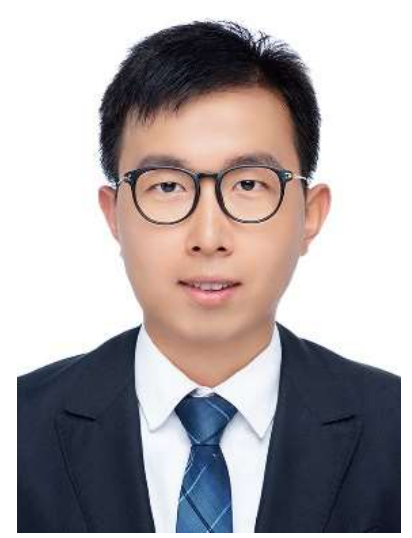Wenhao Liu
Si-based Nanostructures
Institute of Semiconductor, CAS
No. 35 A, Qinghua East Road, Haidian District, Beijing 100083, China
Email: liuwh@semi.ac.cn
Biography
Wen-Hao Liu is a postdoc at the Institute of Semiconductors, Chinese Academy of Sciences. He received his bachelor's degree from Inner Mongolia University in 2015 and his Ph.D. degree from the Institute of Semiconductors, Chinese Academy of Sciences in 2021. During his Ph.D. period, he visited Lawrence Berkeley National Laboratory for one year from June 2018 to July 2019. At present, he is mainly engaged in the theoretical simulation of ultrafast phenomena in semiconductors. As the first author, he has published 8 papers in international journals, such as Science Advances, Phys. Rev. B, npj Comput. Mater., WIREs Comput. Mol. Sci., etc.
Abstract for Presentation
The ultrafast photoinduced nonthermal melting in semiconductors
Laser-induced nonthermal melting in semiconductors has been studied over the last four decades [1], but the underlying mechanism is still under debate. Here, by utilizing an advanced real-time time-dependent density functional theory simulation, we reveal that the photoexcitation-induced ultrafast nonthermal melting in silicon occurs via homogeneous nucleation with random seeds originating from a self-amplified local dynamic instability at the photoexcited states rather than by simultaneously breaking of all bonds, as suggested by the inertial model [2], phonon instability [3-4], or Coulombic repulsion mechanisms [5]. Due to this local dynamic instability, any initial small random thermal displacements of atoms can be amplified by a charge transfer of photoexcited carriers, which in turn creates a local self-trapping center for the excited carriers and yields the random nucleation seeds, as shown in Fig. 1. Because a sufficient amount of photoexcited hot carriers must be cooled down to the band edges before participating in the self-amplification of local lattice distortions, the time needed for the cooling of this segment of hot carriers (rather than electron-lattice equilibration) is the response for the longer melting timescales at shorter laser wavelengths. This finding provides fresh insights into photoinduced ultrafast nonthermal melting.
Figure 1. Emergence of the self-trapping center due to electron-lattice coupling induced selfamplification. (a) The incident photons promote valence electrons from the filled bonding states in the valence band to the empty anti-bonding states in the conduction band. (b) The lattice vibration-induced random movements of atoms cause local distortions in the lattice, which in turn yields band-edge fluctuations. (c) The tensile distorted region acts as a trapping center for excited electrons and holes and induces carrier localization in (e). (d) and (e) represent the real-space distribution of excited electrons and holes, as well as charge population, generated interatomic forces immediately after photoexcitation and at 200 fs, respectively.
References
[1] Van Vechten, J. A., Tsu, R. & Saris, Physics Letters A, 74 (1979) 422-426.
[2] Lindenberg, A. M. et al., Science, 308 (2005) 392-395.
[3] Stampfli, P. & Bennemann, K. H., Phys Rev B, 46 (1992) 10686-10692.
[4] Zijlstra, E. S., Walkenhorst, J. & Garcia, M. E., Phys Rev Lett., 101 (2008) 135701. [5] Hartley, N. J. et al., Phys Rev Lett., 126, 015703 (2021).
WELCOME TO CHINA TO ATTEND THE ICANS
23-26 August, Nanjing, China
Connect with us:




